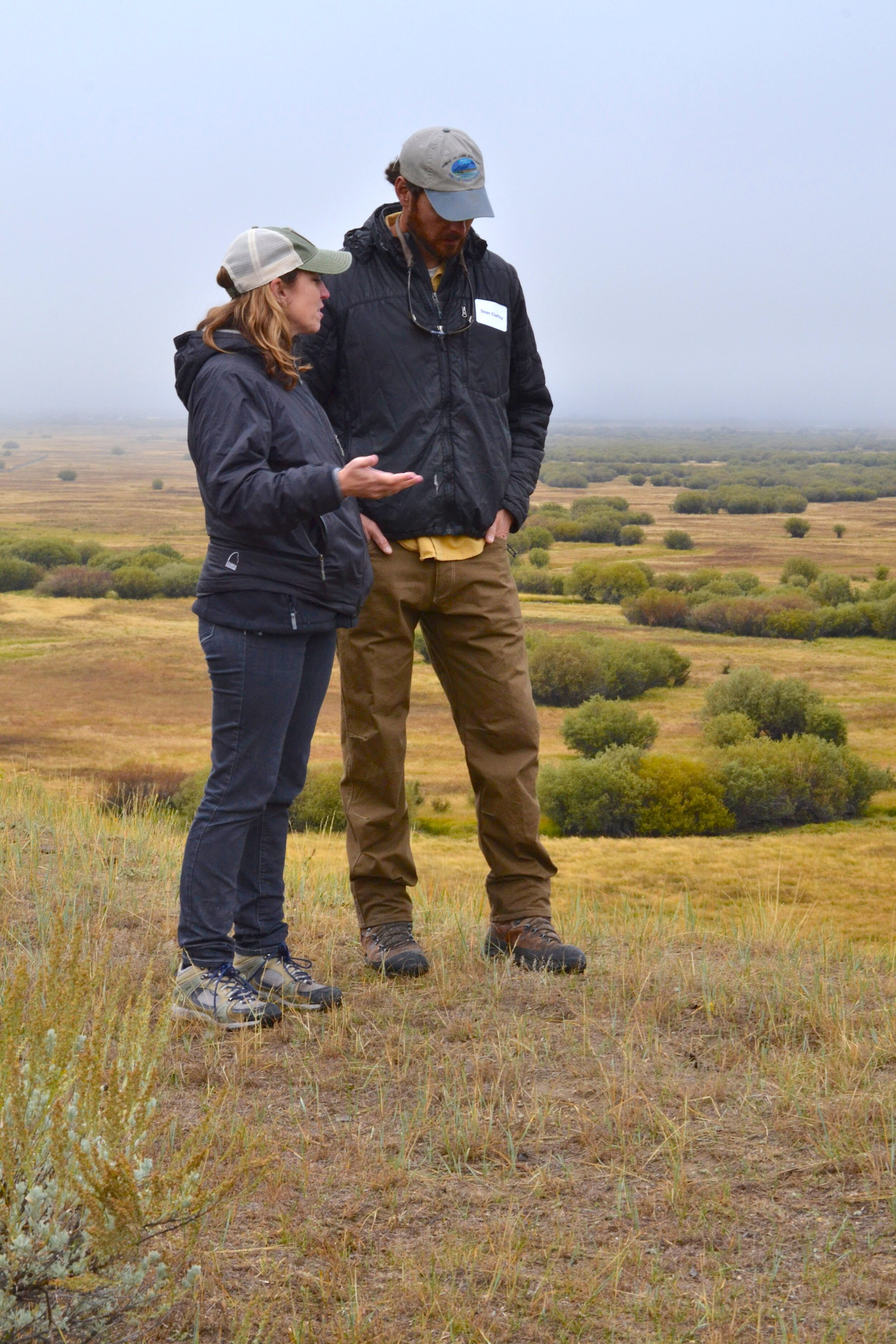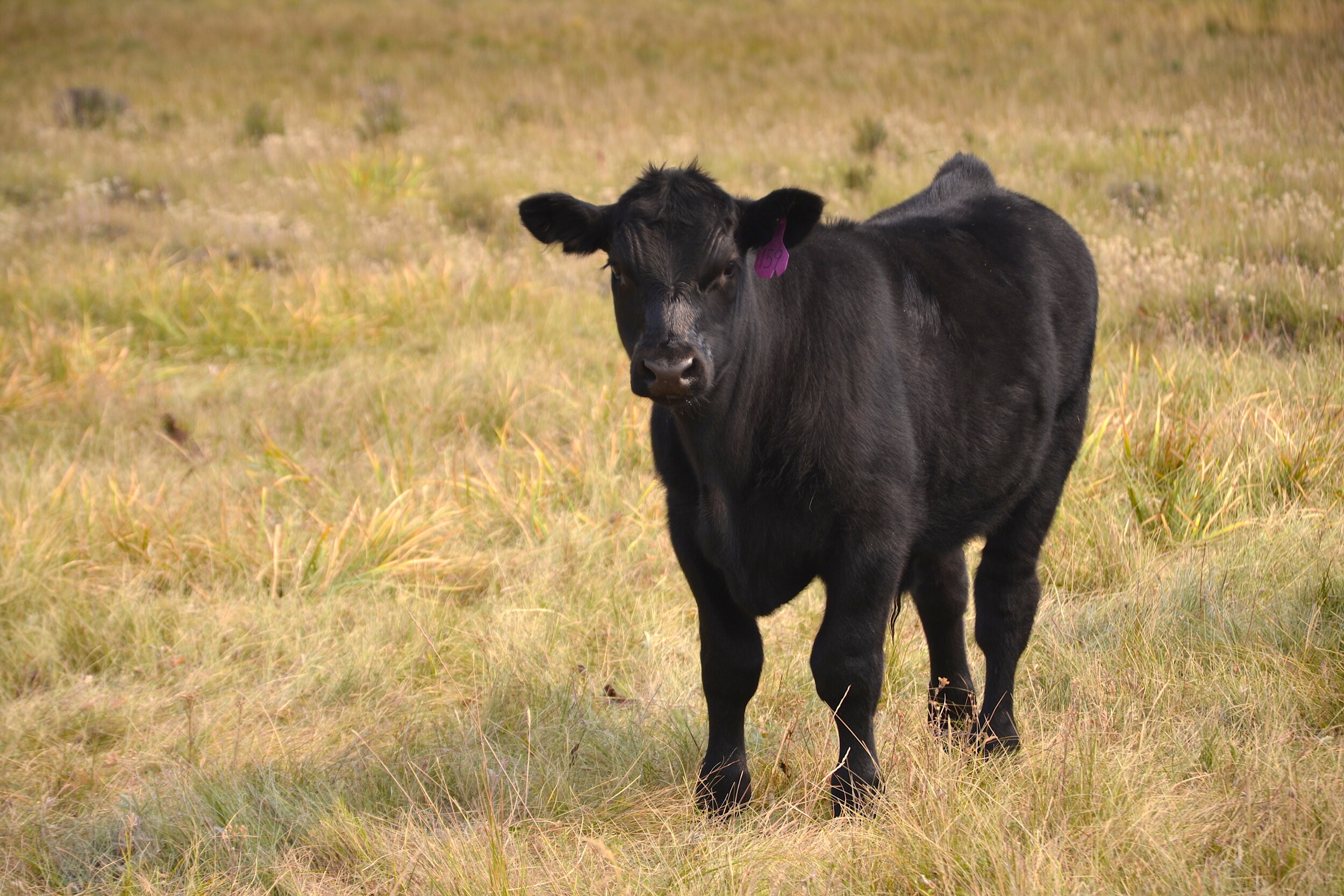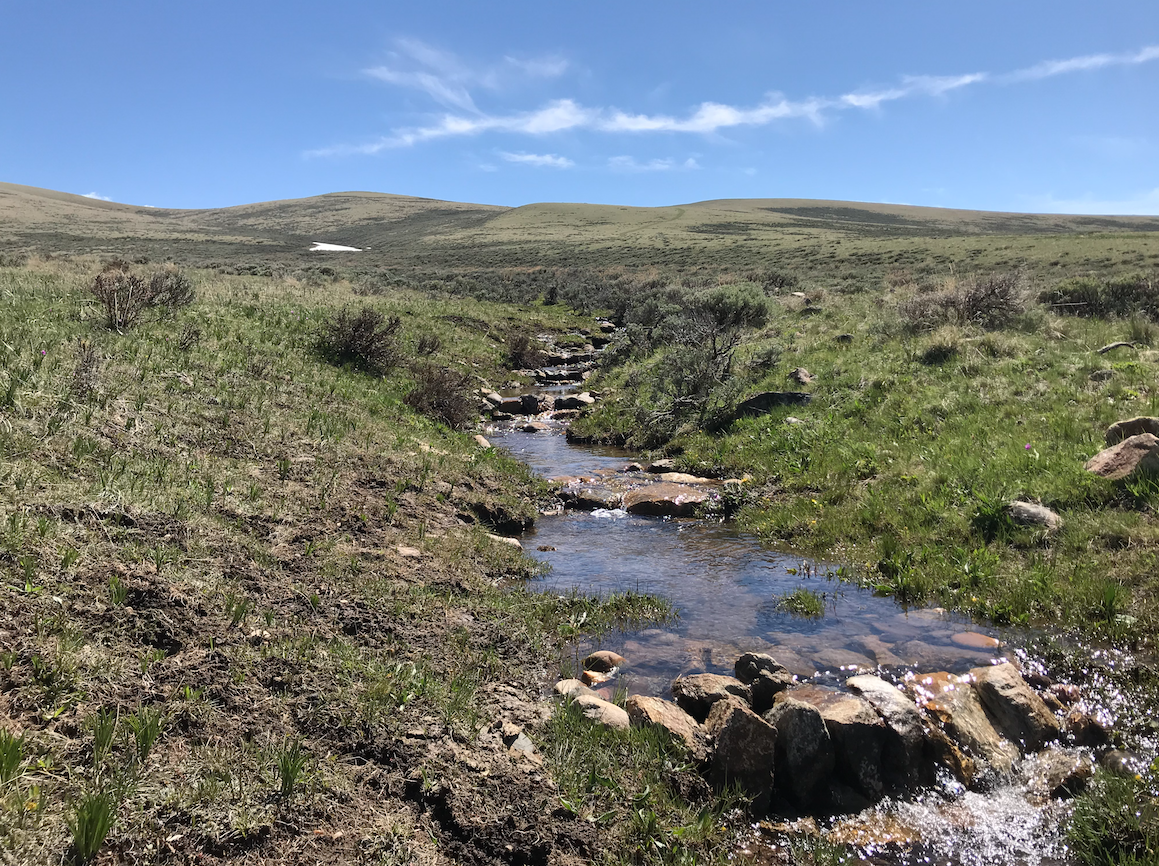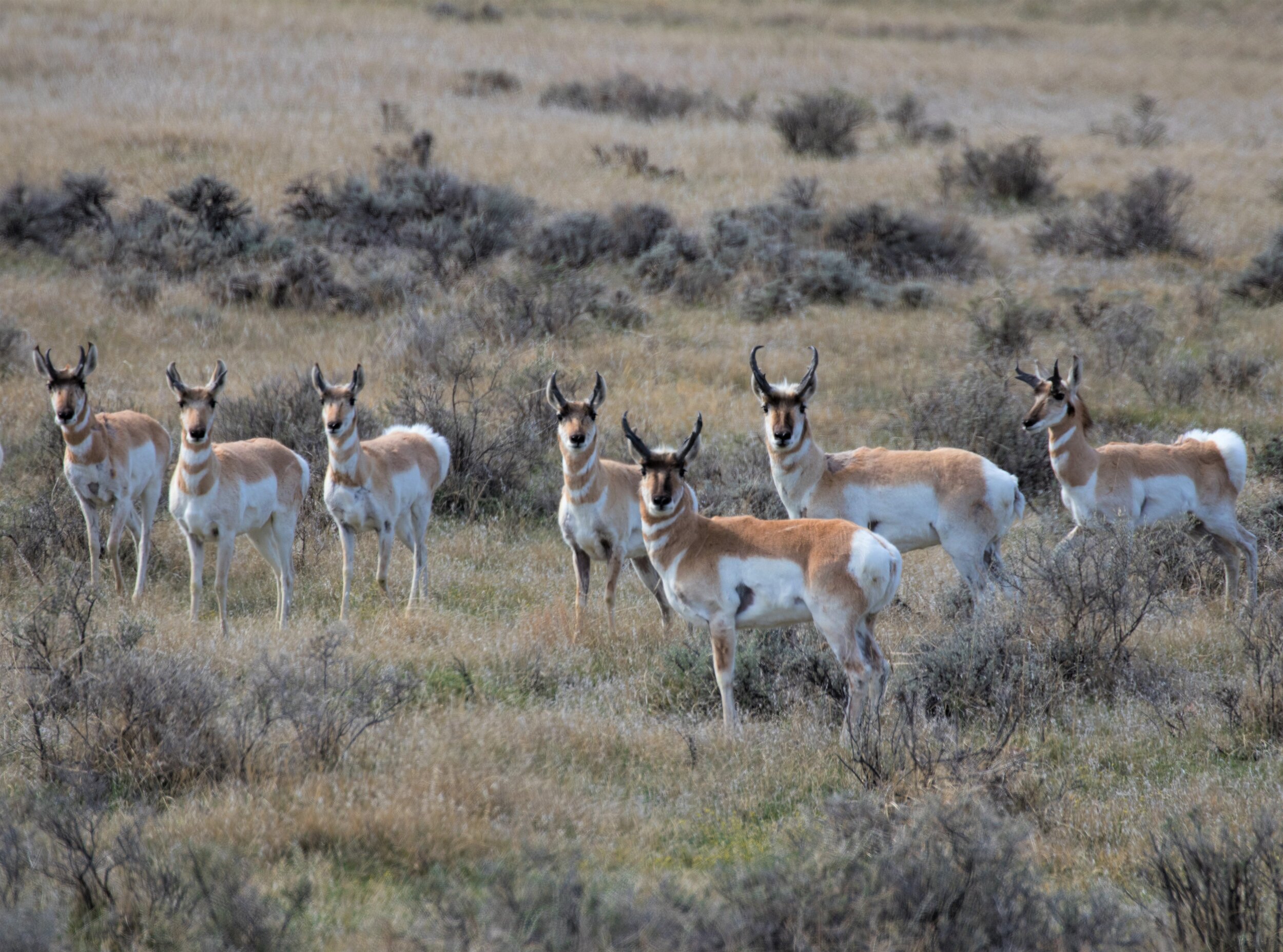Southwestern Montana: A Geography of Sagebrush and Hope
In southwestern Montana’s sagebrush country, there is a hopeful spirit that drives diverse partners to maintain healthy working lands and communities, to keep plants and forage from becoming fuel for destructive wildfires, and to conserve lands that benefit agriculture, recreation, and wildlife. Access this information in a printable fact sheet here.
The Challenge(s)
Changes in this habitat threaten to degrade and destroy this productive and relatively intact part of America’s sagebrush sea and with it the culture and economies connected to the land.
Here are a few of those threats:
Exotic invasive grasses such as cheatgrass are spreading rapidly and replacing native forage for livestock and wildlife, as well as potentially fueling destructive rangeland fires.
Douglas-fir and juniper trees are expanding beyond their native ranges and have already taken over hundreds of thousands of acres of historically productive grasslands and other diverse habitats while increasing the risk of high severity wildfires.
The changing climate is expected to reduce snowpack and water availability as well as decrease the resilience of habitats such as wet meadows and floodplains that recharge natural reservoirs. Protecting and restoring these degraded headwater systems encourages water to stay on the land longer.
Dramatic increases in property values are making it increasingly hard for multi-generational family ranches to persist. Ranching is the way of life that maintains this connected landscape and sustains this working wilderness.
Human populations are expanding and with this, the potential for a growing disconnect between communities and their relationship with nature. This disconnect may diminish the relevance, and therefore the effectiveness of, conservation efforts.
These threats don’t stop at land ownership boundaries; they move across and impact both private and public holdings. Ranchers, land managers, hunters, anglers, and other outdoor recreation groups all benefit when the land is healthy. In this place these people are willing to work together—to give a little to get a little—to keep their communities thriving.
The Place
Sagebrush country in southwestern Montana is a vast, vibrant place between the alpine peaks and deep forests in this far-flung corner of Big Sky Country. This intact expanse of sagebrush shrubs and native grasses and flowers spans from mountaintops to valley bottoms that cradle the headwaters of the Missouri River. Sagebrush habitat protects and links precious snowpack to verdant tributaries and connects habitats for grizzly bear and Arctic grayling, and migration routes for pronghorn, Greater Sage-grouse, and other species. This place is home to multi-generational family ranches intermixed with public land that support vital recreational economies, all anchored by this native landscape and the ecological processes it supports. However, serious challenges are threatening this place and the communities—human and wildlife—that live here.
The Building of a Model:
The Southwest Montana Sagebrush Partnership
In recognition of these challenges, ranchers and small business owners, together with the State of Montana and federal agencies, local conservation districts, and non-governmental organizations put their chips on the table and began a series of coordinated sagebrush restoration and rangeland health projects in the region.
Together, these partners built the Southwest Montana Sagebrush Partnership. The partnership has learned how best to leverage funding, to foster innovation between private landowners, industry, and public land managers, and to improve the health of working rangelands for the good of people and nature.
They have built a successful model of identifying problems, taking on the challenges, and turning them into opportunities.
The work of the Southwest Montana Sagebrush Partnership's larger goal is to spark a shift in the system to make conservation more durable and sustainable into the future. By connecting many individuals from within their growing communities directly to natural resource management, the Partnership will help sustain disappearing working lands and foster broader support of stewardship.
For more information about this partnership, contact Sean Claffey at sean.claffey@tnc.org.
Overview of the Southwest Montana Sagebrush Partnership stewardship accomplishments since 2018
Capacity: One full-time partnership coordination position started in 2018; another full-time wildlife corridor project coordinator started in 2021; and one full-time SMSP project coordinator position started in 2022.
Total projects completed since 2018: 37
Acres of conifer expansion removed to restore habitat diversity and forage opportunities: 22,831
Wet meadow acreage preserved/restored: 60 acres
Structures installed to slow water and enhance its uptake by wet meadow habitats for natural storage: 868
Wet meadow habitat preserved/restored: 7.8 miles
Acreage under permanent conservation easement since 2018: 48,000
Fencing modified to become “wildlife-friendly”: 50 miles
Socio-economic impacts of projects and research grants
Four new small contractors engaged in restoration work, with the opportunity to work year-round.
Three new start-up companies supported by this area’s partnership conservation work.
As part of establishing employment opportunities in southwestern Montana, a locally based Youth Employment Program was created in 2021. This program will serve as a Conservation Corps made of local youth and young adults who will have an opportunity to make an hourly wage and contribute to their community and households.
Working with the wood products industry to pilot innovative ways to improve utilization of small diameter materials and biomass.
Over $1 million in projects implemented since 2018 and over $1.5 million in competitive research grants applied to assess the effects of conservation actions.
Southwest Montana Sagebrush Partnership Coordinator Sean Claffey helped put together a field crew comprised of unemployed fishing guides who were out of work due to the 2020 pandemic. This work was so interesting Montana Public Radio did a story on it. Listen to it here.
Land Health = Community Health: The Work Still to Do
Southwestern Montana partners bring together access to funding, technical expertise, and other resources to make conservation happen. Over the next several years, these partners will release numerous scientific products that objectively detail outcomes of management actions. Initial results have demonstrated that these approaches are working. Here is what is necessary to see this crucial conservation continue:
Investment and momentum cannot slow. Support of innovative ideas cannot cease. To keep the strong healthy landscapes and communities of southwestern Montana, to realize the full potential of this model for collaboration, and to leverage the success of this partnership to others across the West, a sustained commitment of time and funding is required by all partners at the national and regional scale, as well as by local landowners and organizations.
We must conserve the economic, social, ecological, and cultural values of this working landscape so it does not erode like so many places in the West. Please join in by learning more about this partnership and helping support its pursuit of a geography of sagebrush, opportunities, and hope.
“As a member of a 5th generation Montana ranching family, I feel it is imperative to highlight that agriculture is the driving force to the economy of our state. Maintaining and preserving our native grasslands, sagebrush steppe, forests, and watersheds is critical to the sustainability of our way of life moving forward. Through cooperation with the Southwest Montana Sagebrush Partnership, I have implemented several practices to protect and enhance grazing and watering resources for livestock as well as wildlife. I fully expect my family to continue ranching for generations to come. ”













